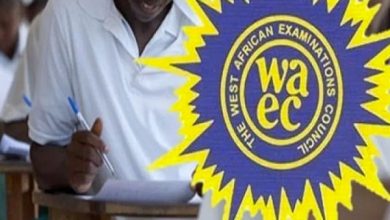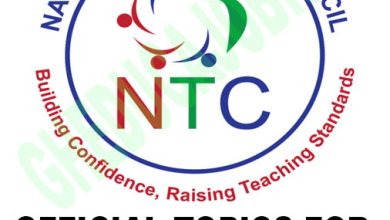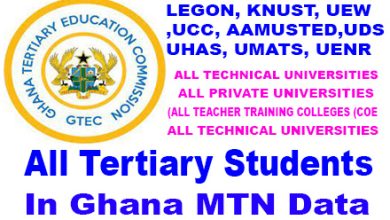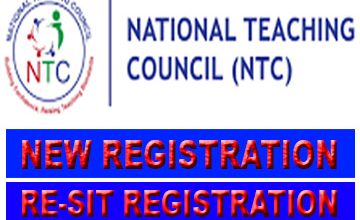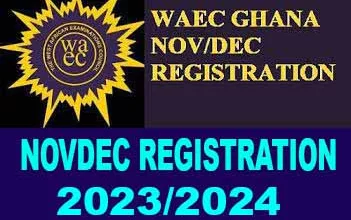PAST QUESTIONS
MEASUREMENT, EVALUATION AND STATISTICS IN EDUCATION PAST QUESTION
SUMMARISATION
- The process of obtaining information for making decisions about students, curricula and educational policy refer to
- The various tools used by the instructor to gather the information are observation, paper-and-pencil test, performance, home assignment, project work, etc.
- Decisions that can be taken about students include:
CLICK HERE FOR ALL LEVEL 300 PAST QUESTIONS
- managing classroom instruction;
- placing students into different types of educational programmes;
- assigning students to appropriate categories;
- guiding and counselling students;
- selecting students for educational opportunities;
- credentialing and certifying their competence.
- Series of questions given to a learner to answer is a In test, we focus on measurement.
- The two types of objective test are supply and selection.
- The supply test is grouped into short answer type and fill in the gap.
- The selection test is grouped into three – multiple choice test, matching test and true/false test.
- The two types of multiple test are – best answer type and multiple answer type.
- The correct alternative in a multiple choice is called key/key alternative.
- The statement that introduces the problem in a multiple choice test is called stem
- The method of estimating the reliability which gives a measure of stability over a period of time is test-retest reliability.
- Which part of the matching-test item should present a problem to be solved? Premises
- Which type of reliability estimate is important for a teacher who wants to measure the internal consistency of a test test-retest.
- The process of assigning a number to a specified characteristics of a person in such a way that the numbers describe the degree to which the person possesses the attribute is termed as measurement. The main trust of measurement is the quantification of attributes.
- The steps in measurement are; set the learning objectives, decide on type of test to be used, and prepare the scoring key.
- The highest scale of measurement is ratio while the lowest nominal/categorical.
- Assessment for learning is diagnostic or formative which seeks to bring out the weaknesses in the learner, and brings improvement.
- Assessment of learning is summative – grading, certification and promotion
- Assessment as learning allows the student to assess himself and reflects on his strength and need.
- In bloom’s taxonomy of the cognitive domain, bringing together parts to form a new whole can best be put under synthesis level.
- The best item format used to assess analysis types of learning objective is essay item.
- A general instructional objective that emphasizes developing attention to classroom activities belongs to the affective domain
CLICK HERE FOR ALL LEVEL 300 PAST QUESTIONS
- Instructional outcomes that aim at inculcating in student’s movement abilities is concerned with the psychomotor domain.
- Which category of the affective domain is concerned with the student’s ability to appreciate the role of science? Valuing
- An incorrect response serving as possible logical alternative in a multiple-choice test is a foil/distracter=
- The test type basically used to measure whether a student has or has not attained a specified level of standard refers to criterion reference test.
- This type of scale measurement, awarding a score of zero, means a total absence of the attribute being measured is ratio scale.
You were the best student in English at the 2014 BECE, is a norm reference interpretation.
- Using nature as a criterion, list the two types of test – oral test and performance test.
- Using purpose as a criterion, an example of test is diagnostic test
- Using uses as a criterion, an example of test is norm reference test
- Three factors to consider when selecting a format for test are consider the purpose of the test, material available must be considered and the number of students to take the test must be considered
- List any three guidelines to follow when constructing matching-type test item: no perfect matching should be expected, both the premises and responses should be homogenous, the longer words should represent premises while the shorter words represent responses.
- State two benefits of the table of specification – to avoid overlapping, to enable the teacher to cover all the content areas.
- Considering the Bloom’s taxonomy of the cognitive domain, which level is appropriate to place an item requires the testee to write his own poem? Synthesis
- The type of evaluation which describes the extent to which a properly implemented programme or procedure has attained its stated goals and objectives is the summative evaluation
- John has not mastered the skill of division in mathematics using the repeated subtraction is a criterion reference interpretation.
- In practising continuous assessment, one needs to employ different assessment to gather information to provide for the assessment of the total personality of the student. This makes continuous assessment comprehensive.
CLICK HERE FOR ALL LEVEL 300 PAST QUESTIONS
- It is a test used to find out the strengths and weaknesses of the testees – diagnostic test
- The two types of multiple-choice item are single best response and multiple response.
- The two types of essay-test type test item are restricted response type and extended response type.
- The appropriateness of the interpretation and use of assessment results is referred to as validity.
- The process of collecting, summarising, and using information from students’ responses to make decisions about each test is termed as assessment test.
- The type of evaluation which involves obtaining evidence to guide in improving the instructional process in the classroom is the formative evaluation.
- The soundness of the interpretation and uses of students’ assessment results is referred to as test validity
The principal stages involved in classroom testing are define the purpose of the test, determine the item format to use, determine what is to be tested, write the individual items, review the items, prepare your scoring key, write instruction, evaluate the test
- Name the three categories of validity evidence – content related, criterion related and construct related.
- In the measurement scale, arbitrary zero, is associated with interval scale.
- The measurement scale type which is commonly used is the interval scale
- In ratio scale, zero means complete absence, and the four operations are used.
- The type of measurement scale which is used for categorization and identification is nominal scale. (It has no quantitative nor qualitative value)
- In Ghana, most tests conducted on students are achievement test.
- A process for obtaining information that is used for making decisions about educational policy is assessment.
- In testing our students, the scale of measurement we use is interval scale
- Mrs. Mensah observed her students during a science laboratory session to determine how effectively students can carry out experiments. Mrs. Mensah assessed her students’ performance.
- Evaluation may or may not be based on measurements
- Jane’s performance in the end of semester examination was very good. This statement illustrates evaluation.
- A teacher gave a mid-semester quiz to students and used it to grade them. This mid-semester quiz served as both summative and formative evaluation.
- Identify five purposes of assessment in Education:
CLICK HERE FOR ALL LEVEL 300 PAST QUESTIONS
- planning and organizing student instruction;
- managing instruction (including feedback to the teacher and pupil);
- motivating students;
- grading students;
- providing guidance to students;
- Selecting and placing students;
- and classifying students.
- For feedback to students to be most effective, the teacher should ensure that students are provided with scores promptly.
- General principles of assessment are:
- State what is to be assessed.
- Select an assessment method which is most relevant to the characteristics to be assessed.
- Use a variety of procedures to obtain comprehensive information on the student.
- Be aware of the limitations of the assessment procedure you may used.
- Use assessment procedure that gives feedback to the learner.
CLICK HERE FOR ALL LEVEL 300 PAST QUESTIONS
- The most important criterion for selecting an assessment procedure to be used is the relevance of the procedure to the characteristics being measured.
- Why is it necessary for the teacher to specify what he/she wants to assess? To ensure the selection of appropriate procedures
- One principle of assessment that underlies the introduction of continuous assessment is ensuring that a more comprehensive information is obtained on the student.
- One of the general principles of assessment is that good assessments are provided by multiple indicators of performance.
- The needs of the society are reflected in the educational goals.
- The general products of learning are known educational outcomes.
- Taxonomy means the same as classification
- The hierarchy of Bloom’s taxonomy is
- Knowledge- recall of specific information: rearrange, define, list, label, name etc.
- Comprehension- lowest level of understanding: explain, describe, translate, summarize, paraphrase, convert, differentiate.
- Application- application of a rule/principle: apply, change, compute, construct, dramatize, interpret, modify, produce, sketch etc.
- Analysis- break an idea into component part and describe the relationship: analyse, criticise, examine, compare, contrast, break down etc.
- Synthesis- put parts together to form a new whole like the writing of a poem: combine, categorize, rewrite, create, compose, invent, design, devise etc.
- Evaluate- make judgements about materials and methods: assess, criticise, rank, defend, recommend, evaluate, reargue, appraise.
CLICK HERE FOR ALL LEVEL 300 PAST QUESTIONS
- One of the important teaching uses for taxonomies of thinking skills is to divide up cognitive thinking into small, teachable units.
- Who is the odd one? (Bloom, Engelhart, Furst, Quellmalz, Hill, Krathwohl)
- Which category of thinking skills is not included in Quellmalz’s taxonomy? Comprehension
- In learning, where specific evidence or details are obtained and used to generalise, we call it inductive reasoning.
- A formal argument made up of a major premise, a minor premise and a conclusion is referred to as syllogism. “All birds have feathers, penguins are birds, therefore penguins are birds” is an example of syllogism.
- Which category of learning outcomes of Quellmalz’s taxonomy includes knowledge and comprehension? Recall
- With regard to Bloom’s taxonomy of learning objectives, the statement “The student will be able to distinguish between evaluation and measurement” is an example of analysis.
| Quellmalz’s Taxonomy | Bloom’s Taxonomy |
| Recall | Knowledge & Comprehension |
| Analysis | Analysis |
| Comprehension | ———————————— |
| Inference | Application & Synthesis |
| Evaluation | Synthesis & Evaluation |
Validity of assessment refers to interpretation and use of the assessment results.
- What will you do to validate your classroom test results? Look for evidence for the proposed interpretation and uses of the results.
- Validity of assessment results depend on evidence that supports the uses of inner relation to which you put assessment results and their interpretation.
- Assessment results may have high, moderate or low validity for a situation depicts the nature of validity.
- A table of specification gives indication on content areas and the thinking skills in a test.
- Evidence that a general science test adequately samples a specific area of the general science curriculum is called content-related evidence.
- An English Language teacher in a JHS gave a verbal aptitude test to 50 students. Later the teacher compared these scores to their grades at the end of first term of the following year. Which type of validity evidence does this illustrate? Criterion-related evidence.
CLICK HERE FOR ALL LEVEL 300 PAST QUESTIONS
- When constructing her test items for the end-of-term exam in mathematics, Ms Mensah checked each item to see if it matched the material that she taught the class. What type of evidence was Ms Mensah looking for? Content-related evidence.
- A test is a systematic procedure for observing and describing one or more characteristics of student using a numerical scale or classification scheme.
- Numerical scale is by using number to assess pupils.
- Classification scheme is by using ‘good’, ‘very good’, ‘average’, etc asses pupils.
- A daily process by which information are gathered about students’ progress in achieving the curriculum’s learning target is a continuous assessment.
- Formative continuous assessment is used daily lesson and how well your day’s lesson is going.
- Summative continuous assessment is where major learning targets are reported using grades.
- Characteristics of continuous assessment are
- Cumulative – is based on all the scores obtained in all measurements throughout the year or term.
- Comprehensive – assessment of the total personality of the student.
- Diagnostic – continual monitoring of a student’s performance/achievement, weakness and strength, difficulty and problems.
- Formative – get immediate and constant feedback on a student’s performance for remediation.
- guidance-oriented – directed and motivated in his learning.
- Systematic – assessment is not spontaneous.
- Strengths of continuous assessment are;
CLICK HERE FOR ALL LEVEL 300 PAST QUESTIONS
- Provides excellent picture of a student’s performance over a period of time.
- Enables all to actively and more meaningfully get involved in the assessment of students throughout the teaching and learning.
- Caters for the domains in the taxonomy of educational objectives, and make him a balanced person.
- Helps reduce fear and anxiety about failure among students
- Encourages students to work assiduously through since everything counts.
- 90. Weaknesses of continuous assessment are
- Increase in the workload of the teacher
- Inadequate knowledge in the test construction affects the process
- Inadequate of materials and equipment
- Inadequate supervision
- Problem of record.
CLICK HERE FOR ALL LEVEL 300 PAST QUESTIONS
- Role of teachers in the practice of C.A.
- Assess all areas of the students
- Break the programme into smaller, specific units.
- Assess learning outcomes and performances after every instruction.
- Formulate measurable specific attainable instructional objectives.
- Provide remedial tuition when necessary
- Constant evaluation is needed
- Provide constant feedback
GOALS AND LEARNING TARGET OF INSTRUCTION
- A general aim or purpose that is usually broad is a
- The human activities that contribute to the functioning of a society and which can be acquired through learning is called educational goals.
- The educational goal at the basic level of education includes literacy and numeracy as well as good citizenship.
CLICK HERE FOR ALL LEVEL 300 PAST QUESTIONS
- What occurs as a result of an experience is described as the outcome.
- The product of learning experiences is called educational outcomes.
- Educational outcomes include: knowledge, understanding, application of knowledge and understanding to situations, thinking skills, general skills, attitudes, interests, appreciations and adjustments.
- The description of a performance the teacher/instructor wants his/her students to be able to exhibit before he/she considers them competent with regard to a specific subject-matter or content or behavior is called
- What specifies what the teacher would like his/her students to be able to do, value or feel at the completion of an instructional segment? Learning objectives
- A stated desirable outcome of education is called instructional objective.
- Instructional objectives are known as behavioral objectives.
- A statement that specifies what observable performance the learner should be engaged in when we evaluate achievement of the objective is known as behavioral objectives
- Some of the action verbs used in stating instructional objectives are; describe, recite, solve, draw, label, explain, match, state, classify, identify, list, complete and name.
- Verbs such as understand or appreciate are not considered behavioural because one cannot observe a person “understanding” or “appreciating”
- An instructional objective should be clear, specific, achievable and measurable.
- State some Importance of learning objectives for classroom assessment
CLICK HERE FOR ALL LEVEL 300 PAST QUESTIONS
- It makes general planning for an assessment procedure easier
- It makes The selection, designing and construction of assessment instruments easier.
- It makes Evaluation of an existing assessment instrument easier.
- They help to judge the content relevance of an assessment procedure.
- One Example of general learning target:
Acquire the skills needed to use common instrument to measure length, volume, and mass in metric units.
- Examples of specific learning targets:
- Measure the length of objects to the nearest tenth of a meter using a meter stick.
- Measure the mass of objects to the nearest tenth of a kilogram using a simple beam balance and one set of weights.
- Measure the volume of liquids to the nearest tenth of a litre using a graduated cylinder.
- The system of classification in which the particular entities are arranged in accordance with clear guidelines and principles is known as Taxonomies of educational objectives.
- The hierarchical schemes for classifying learning objectives into various levels of complexity is called Taxonomies of educational objectives.
- There are three main domains of educational objectives. These are:
- Cognitive (understanding, knowledge, facts)
- Affective (attitude, opinions, values, beliefs)
- Psychomotor (skills).
CLICK HERE FOR ALL LEVEL 300 PAST QUESTIONS
- List the six major categories of cognitive domain performance by blooms taxonomy from the simple (lowest) to complex (highest).
- Knowledge (recall of specific information)
- Comprehension (lowest level of understanding)
- Application (application of a rule or principle)
- Analysis (break an idea into component part and describe the relationships)
- Synthesis (puts the parts together to form a new whole)
- Evaluation (makes judgments about materials and methods).
- The major categories created by Quellmalz that are not categorically stated in Bloom’s taxonomy are comparison and inference.
- List the five major categories of cognitive domain performance by Quellmalz taxonomy.
- Recall (recognizing or remembering key facts, definitions, concepts, rules and principles.)
- Analysis (It involves dividing a whole into component parts.
- Comparison (the ability to recognize or explain similarities and differences.
- Inference (deals with both deductive and inductive reasoning)
- Evaluation (is concerned with judging the quality, credibility, worth and practicality.
CLICK HERE FOR ALL LEVEL 300 PAST QUESTIONS
- The domain that describes our feeling, likes and dislikes, and our experiences as well as the resulting behaviours (reactions) is known as affective domain.
- List the five level of taxonomy of objectives in affective domain proposed by Krathwohl, Bioom and Masia (1964) based on the level of commitment.
- Receiving (the willingness to receive or to attend to particular phenomena or stimuli)
- Responding (to active participation on the part of the student)
- Valuing (the worth or value or importance the student accords or attaches to a subject, activity, assignment, and others)
- Organization (bringing together complex values, possible disparate values, resolving conflicts between them)
- Characterization by a value (using values to control one’s behavior to develop life style)
- List three illustrative verbs for the following;
- Receiving Illustrative verbs include, acknowledge, ask, attend, be aware, choose, show alertness
- Responding Illustrative verbs include; answer, ask, assist, contribute, discuss, follow-up, question, report
- Valuing Illustrative verbs include, complete, commit, initiative, exhibit, demonstrate, display, work, share.
- Organization Illustrative verbs include, adapt, adhere, formulate, integrate, modify.
- Characterizing Illustrative verbs include, behave, discriminate, listen, perform, and serve.
CLICK HERE FOR ALL LEVEL 300 PAST QUESTIONS
- Receiving has been divided into three sub- categories: awareness, willingness and controlled or selected attention.
- The educational outcomes that focus on motor (movement) skills and perceptual processes is known as the Psychomotor domain
- The Psychomotor domain measured in terms of speed, precision, distance, procedures or techniques in execution.
- The six main categories of Harrow’s taxonomy organized according to the degree of coordination are:
- Reflex movements (actions elicited without learning in response to some stimuli. e.g. flexion, extension, stretch, postural adjustments.)
- Basic fundamental movement (inherent movement patterns that are formed from a combination of reflex movements and are the basis of complex skilled movements. e.g. walking, running, pushing, twisting, gripping, grasping, manipulating.)
- Perceptual abilities (interpretation of stimuli from various modalities providing information for an individual to make adjustment to his environment. e.g. coordinated movements such as jumping rope, punting, or catching.)
- Physical activities (requires endurance, strength, vigour, and agility which produce a sound, efficiently functioning body. e.g. distance running, weight lifting, touching toes, typing)
- Skilled movements (performing complex movement task with a degree of efficiency based on inherent movement patterns. e.g. all skilled activities obvious in sports, recreation and dance.)
- Non-discursive communication (communication through bodily movements ranging from facial expressions through sophisticated choreographies. e.g. body postures, gestures, and facial expressions)
CLICK HERE FOR ALL LEVEL 300 PAST QUESTIONS
- List all the sub-categories of Harrow’s taxonomy.
- Reflex movements (three sub- categories: segmental reflexes, intersegmental reflexes and supra-segmental reflexes)
- Basic fundamental movement (There are three sub-categories: locomotors movements, non-locomotors movement and manipulative movement)
- Perceptual abilities (There are five sub-categories: Kinaesthetic discrimination, visual discrimination, auditory discrimination, tactile discrimination and coordinated abilities)
- Physical activities (There are four sub- categories; endurance, strength, flexibility, agility)
- Skilled movements (There are three sub- categories: simple adaptive skills, compound adaptive skills and complex adaptive skills)
- Non-discursive communication (There are two sub- categories: expressive movements and interpretive movements)
- Ways of Making Objectives Amenable to Measurement and Evaluation.
- Objectives should begin with an action verb
- Objectives should be stated in terms of observable changes in

